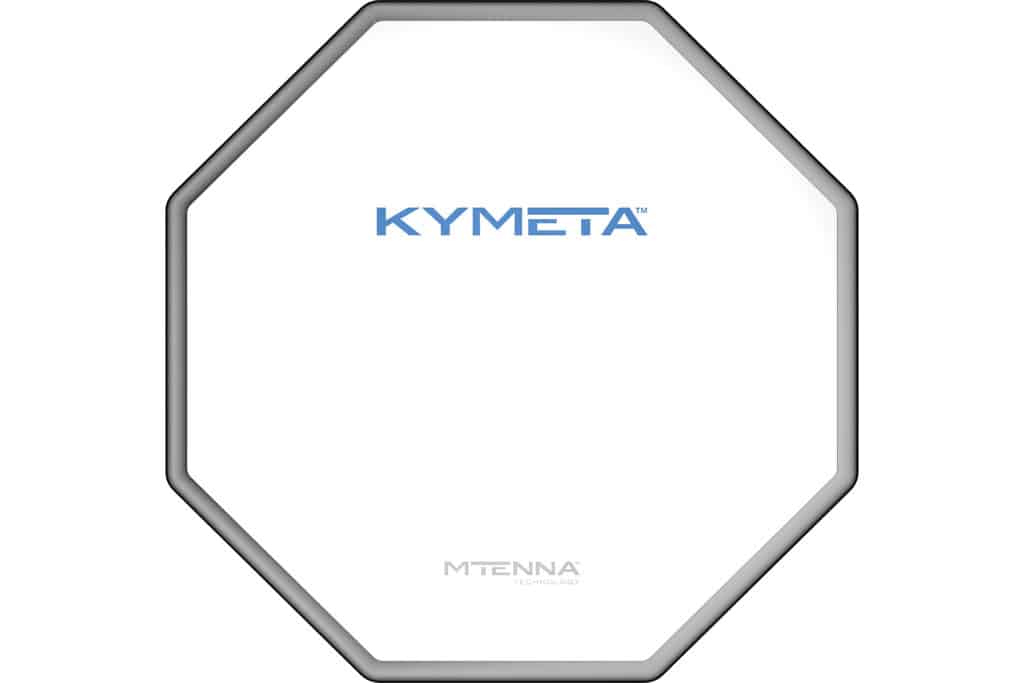
In may 2011, Yachting sent me on a wild assignment to see how far north from Seattle we could cruise aboard a Protector Hauraki 40 in a round-trip, 72-hour window. The Protector had 550 horses strapped to its stern but lacked satellite-communications equipment, and my wife and I were in the final throes of buying our first house. Luckily, I have an incredibly understanding spouse who ensured that the deal had closed, but I remember spending hours of 40-knot cruising wishing there were a way to mount a small but capable satcom system onto the boat’s coachroof.
Now, thanks to the breakthrough work of Nathan Kundtz, founder and CEO of the Kymeta Corporation, just such a satcom solution is here.
Satellite communications have opened up worlds of possibilities for internet-dependent boaters, but stabilized antennas aren’t without their challenges. For starters, they employ complex gears and motors so the antennas can track satellites in all sea states; they sometimes require physical hardware swap-outs as vessels transit regions; and they’re expensive, in terms of both hardware and airtime rates. Moreover, satellite-communications antennas are housed in protective domes that can be cumbersome to install and are not aesthetically ideal.
Kymeta’s flat-panel antennas are promising red skies at night for data-hungry boaters. The company’s first steps began at Duke University, where Kundtz, working toward a Ph.D. in physics, was conducting award-winning research in metamaterials (engineered materials that have properties not found in nature). Then Intellectual Ventures in Bellevue, Washington, recruited him, and he hand-built his first prototype antenna in February 2012. After showcasing it to company brass, including Bill Gates of Microsoft fame, the decision was made to spin off the antenna technology into its own company and products.
Today, Kymeta’s fourth-generation mTennau7 antenna subsystem modules (ASM) consist of six sandwiched layers: a back shell enclosure, the antenna’s control electronics, its signal-feed assembly, its thin-film-transistor aperture, a radome assembly and a bezel. (Kymeta also has an integrated product, the KyWay terminal.) The technology involved with mTennau7 is solid-state, so there are no moving parts, and Kymeta designed its antenna to be built on existing LCD assembly lines at television factories.
“The core technology is liquid crystals on glass,” says Håkan Olsson, Kymeta’s vice president of its maritime division.
Given Kymeta’s multi-industry ambitions, the Redmond, Washington-based company partnered with e3 Systems (e3s.com) in Mallorca, Spain (with satellite offices in Coral Springs, Florida). E3 Systems is Kymeta’s global distributor for mTennau7 ASMs in the recreational marine sector, for yachts that are longer than 78 feet. E3 is also an industry leader in yacht-based communications and information technology.
As adoption rates increase, he says, hardware and airtime costs should drop. That aligns with Kymeta’s goals to extend far beyond the maritime sector; it has partnered with Toyota to bring affordable broadband connectivity to cars. If an antenna is going to be used aboard a midpriced vehicle, Olsson says, “it can’t cost tens of thousands of dollars per unit.”
Once an mTennau7 is installed and connected to a power supply, a modem, a block-up converter and a heater (to prevent the liquid crystals from freezing), it provides global coverage on Kymeta’s Kālo service, which the company partnered with Intelsat to create. Kālo uses Intelsat’s global network of geosynchronous orbit, wide-beam and high-throughput spot-beam satellites that operate on the Ku-band frequency (12 to 18 GHz). Users buy gigabyte packages ranging from 1 GB to 80 GB per month. However, speeds can vary.
While stabilized antennas articulate their dishes to stay connected, Kymeta’s stationary, flat-panel antennas have to use alternate means in the form of software that steers the radio-frequency (RF) energy that the antenna emits and receives.
“Think of it as a TV screen with tens of thousands of pixels, but instead of emitting light, we emit radio frequencies,” Olsson explains. “By changing the way [the pixels] are arranged, it creates a [RF] beam in a certain direction; when the boat moves, the satellite terminal changes the [pixel] pattern and main-tains the link to the satellite.”
This full-duplex system, he says, uses internal motion sensors and GPS to determine its position and orientation toward the nearest satellite, and it changes its RF-energy pattern within milliseconds to account for movement.
“It’s an industrial-grade version of [the nine-axis compass] in an iPhone,” he says of the Kymeta’s heading sensor.
How the antenna physically sends and receives data is also something of a sea change. “With our system, there are tens of thousands of pixels emitting radio frequencies,” Olsson says, cautioning that there’s “a little magic” involved. “Holographic interference creates a stronger central beam and goes to the satellite.” This holographic interference acts like a stabilized antenna’s dish and helps focus RF energy while transmitting and receiving signals.
Still — just like everything else on this planet — RF energy is beholden to the laws of physics, and Kymeta’s flat-panel technology is just as susceptible to signal blockage as stabilized antennas. “You need an unobstructed view of the sky,” Olsson says. Kymeta’s tech-forward solution is to network four or more flat-panel antennas together via a belowdecks combiner, which meshes together the gain from any connected Kymeta antenna.

Nathan Kundtz
“If you double the number of antennas, you get a 2.7-decibel gain,” Olsson says, adding that as many as 64 antennas can be fitted aboard a single vessel.
Speed is another critical concern, and Kymeta advertises the ability to support data-transfer speeds faster than 100 Mbps. For comparison, this is roughly twice the speed of the fastest dome-based satellite- communications system, Inmarsat’s Global Xpress. However, Olsson warns that there are multiple places from which speed can get sapped. For example, Kymeta uses iDirect X7 satellite modems, which have maximum download speeds of 65 Mbps, meaning that speeds can be limited by upstream and downstream hardware. Also, as with regular satellite communications, Kymeta’s mTenna technology typically downloads data faster than it transmits, but this metric currently can’t be quantified.
The mTennau7 ASM is available in 32.4-inch (diameter) panels that are 2.8 inches deep, offering yacht designers a low-profile connectivity option. The panels weigh roughly 80 percent less than comparable stabilized antennas, according to Kymeta. But, Olsson says, “the number one benefit is that there are no moving parts that can fail,” adding that mandatory hardware swap-outs are never required. Kymeta is working on miniaturizing its mTenna technology for the automotive sector, which should lead to smaller marine-grade antennas, which could be an ideal setup for smaller yachts, tenders and sailboats.
While yacht owners can already order mTennau7 ASMs to lower their vessel’s skyline profiles and future-proof their communications systems, there’s no question that even smaller antennas would be welcome aboard rides such as the Protector Hauraki 40 that I cruised aboard while my wife took care of business ashore. I guess I owe her one.









